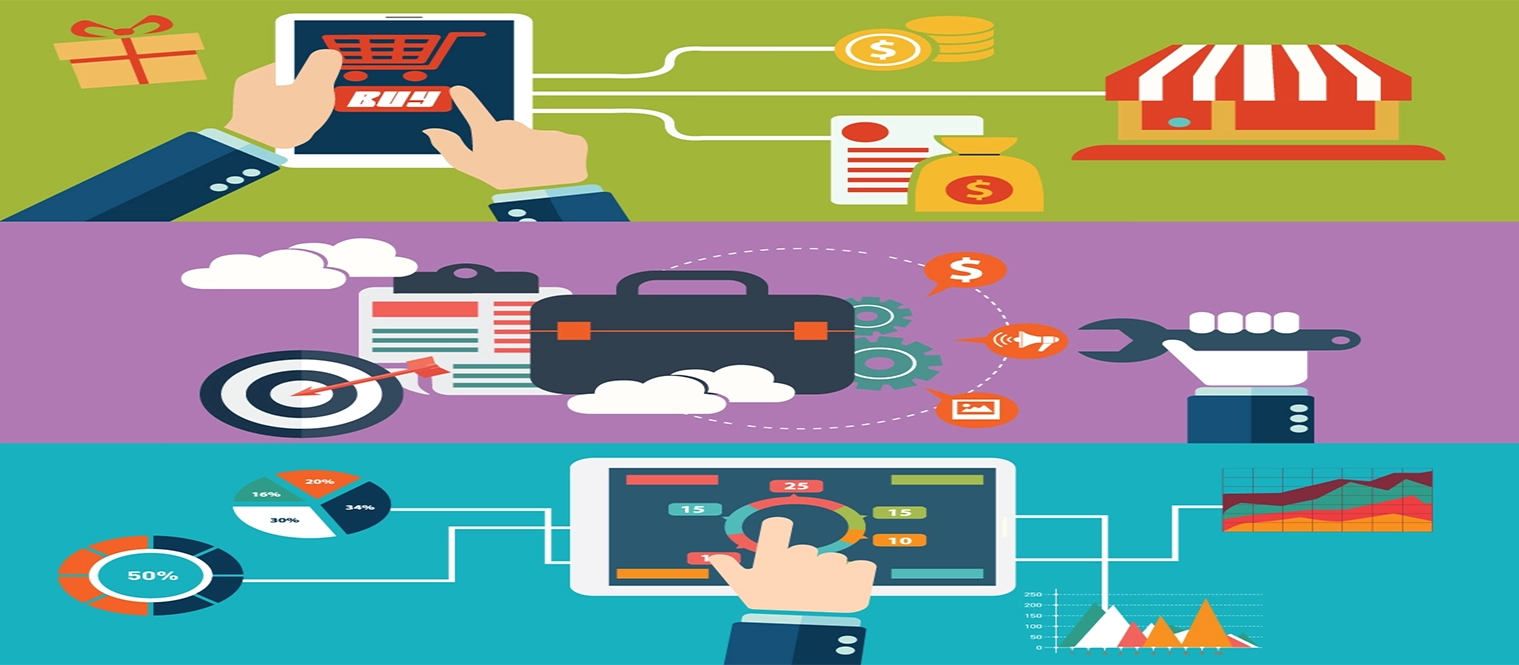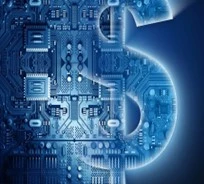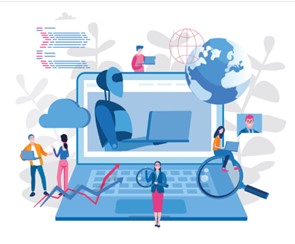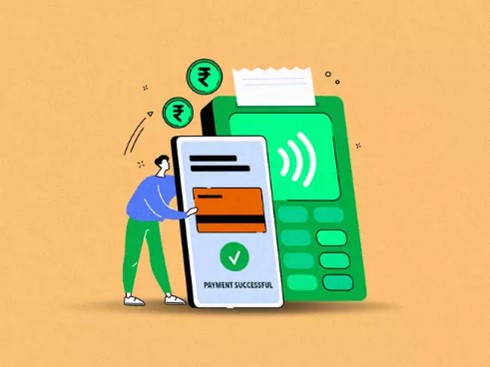

Dr Vijayendra Gupta Professor, School of Business, Woxsen University
C0010
Feb2024
Introduction:
The world as known to everyone, is continually changing. One of the fundamental drivers is digital transformation. Digitalization in retail business is pervasive, affecting all sectors of the economy. Be it food, travel or shopping! At its core, digital transformation is not about Internet “unicorns.” It is not only about using the latest technology to do what you already do – but doing it in a better way. Online retail is projected to contribute 10.7 percent to the total retail market by 2024, a substantial increase from 4.7 percent in 2019. (Dezan Shira & Associates.-India Briefing August 2023)
Digital technology has become a foundational element for all industries, but retail is facing several challenges that have brought it to the fore. Premiumization and personalization are gaining even more traction.



Fig-1 Concept of Digital Economy ( Source : compiled from various online sources)
Youth of India teenage educated and mobile internet equipped buyers are the most enthusiastic about new ways of shopping. Most Gen Z (Gizmo) consumers don’t even think in terms of traditional channel boundaries. Retail business owners continue to grow exponentially, as well as digital apps for placing orders and digital payments. A lack of clarity about “digital business models” hobbles many efforts, either to sellers or to buyers.
What Is the Digital Economy?
Almost every aspect of retail has changed, from traditional means of in-store shopping to today’s borderless Q-commerce, e-commerce and s-commerce-led shopping, cash payments to cashless payments and EMIs, and physical shelf space to online shelf visibility.
Traditionally the term “digital economy” the internet (1990) was, add-on to analog products and services. Later on, how emerging digital channels might impact consumers and businesses in the broader economy. In Wi-Fi enabled data driven age, it is essentially any economic activity that occurs online. Now-a-days, it is considered as a data-driven economy informed by the ability to collect, use, and analyze enormous amounts of machine-readable information ( e.g. AI & ML enabled online shopping options) to deliver more personalized and meaningful customer experiences. Digital supply networks are the future of work and work environment. Premiumization and personalization are gaining even more traction.
As technology evolves, it stretches companies increased access to products and services that can accelerate their business models. Research publisher, The Conversation, explained that the digital economy reflects, “how digital technology affects production and consumption, “including how goods and services are marketed, traded, and paid for.” - Wharton
The economic activity which results from billions of day to day online connections among people, businesses, devices, data, and processes. The backbone of the digital economy is hyperconnectivity which means growing interconnectedness of people, organizations, and machines that results from the Internet, mobile technology and the internet of things (IoT). - Deloitte
The digital economy is taking shape and undermining conventional notions about how businesses are structured, how firms interact; and how consumers obtain services, information, and goods. With the rise of e-commerce, mobile shopping, and most recently smart technologies, new competitors threaten this long-standing supremacy. Technology can be transformative and help create a fairer, more prosperous, equally accessible world. Mobile devices have already established themselves as a crucial platform for digital information and communications, and the same is beginning to apply to retail and commerce.
Digital transactions in Digital Economy of India:

Fig: 2 Digital Transformation
India currently ranks as the second largest internet market globally, with over 800 million internet users. Digital transactions are grouped into two broad categories: digitally ordered and Digitally Delivered. Technology supports the seamless integration of online and offline channels with smart digital services that facilitate end-to-end customer decision journeys. Walmart created Walmart Global Tech, comprising 15,000 engineers, data scientists, and other roles. Emerging markets are lucrative business opportunities for retail business entrepreneurs in developed markets today. Technology and demanding consumers have further distanced retail from its old self and have brought about changes that seemed nearly impossible just a few years ago. A Deloitte study titled “Future of Retail” predicts that India’s online market will jump to US$325 billion in 2030 from US$70 billion in 2022.
A digital entrepreneur is a business owner who runs their company online. Podcasters, bloggers, digital retailers, online course creators, and some types of freelancers, such as virtual assistants and graphic designers, are a few examples of digital entrepreneurs. (https://www.shopify.com/blog/digital-entrepreneur) According to researchers, a Retail digital business entrepreneurs concept includes Large and Small retailers, purchasing from manufacturers and suppliers through e-channels, accepting orders online from consumers, accepting and making payment online through internet multiple mode of payments, and delivering products and services through mobile apps and websites. Small businesses can compete with industry giants and set themselves apart by making their services more convenient.
Problems Presented and propounded by Retail entrepreneurs:
According to the International Labor Organization (ILO), the median share of women in ICT across 116 countries is under one-third. Women hold only 24% of leadership and executive positions in the ICT sector globally. Women entrepreneurs are facing Glass ceiling and Bamboo ceiling in Indian culture. Many women entrepreneurs Indira Nooyee, Kiran Majmudar Shaw have become successful entrepreneurs. But Small-scale men- women entrepreneurs facing financial problems, literacy about market and goods, also support from government and Family is inherent in co-existence. When it comes to developing or expand a new business, using IT, Technology and Digital tools and techniques, paucity of training and knowledge sharing is inevitable. Hand-holding support to budding entrepreneurs is absent in true sense. Real Successful businesses, which can be termed as digitally developed in digital economy by retail entrepreneurs are in question! The most famous payment app, BharatPe – founder Ashneer Grover and his family members are found to be involved in money laundering. Failure of Leading retailers Big-Bazaar owner is creating doubtful reasons. No doubt success stories are there, like Zerodha Broking Company, Paytm, Google-pay etc. too. But, Quick commerce acquainted, Gen-Z, and new digital economy age entrepreneurs, keep on searching business models for becoming billionaire in a day or two.
Consumer activity has been shifting from offline to online, and most traditional retailers have struggled to expand their technological capabilities. Digital payments unsuccessful, Digital payments tracked by government sources for income tax auditors, distributors’ / agents payment expected for non-billed ( No Invoice items),etc. Related to monetary transactions for security and privacy of retail entrepreneurs and consumers. Fear of loosing money in digital transactions is still high among middle income and lower income segments.

Fig- 3 The Digital payments – A major trend of digital Economy
Motivations to retail enterprise could be as follows:
A small shop might use an e-commerce platform to expand its sales to include the entire country. A farm might use consumer trend forecasting to pivot to more plant-based products. The blockchain helps banking customers protect their financial security and improve the customer experience in their online banking app. Retailers that commit to a radical transformation of their tech function can both spark growth and increase performance.

Fig-4 Every segment of market must be part of digital economy ( Source )
Retail entrepreneurs are facing an urgent need to overhaul their tech architecture and operating model to keep pace with the changing landscape. Five concrete actions can accelerate the transformation journey.
What is Digital prosperity for All?
It is the transformative power that technology has in shaping societies, economies, and individuals’ lives. It involves expanding broadband infrastructure to reach underserved areas, reducing the cost of internet access, and ensuring that marginalized communities have the necessary tools and skills to benefit from digital technologies. The importance of digital ethics, user rights and data privacy in an increasingly data-driven world. RBI had announced the construction of a composite RBI-DPI in March 2018. The index comprises five broad parameters that enable the measurement of the deepening and penetration of digital payments in the country over different periods. These parameters are as follows: Payment Enablers (weight 25%); Payment Infrastructure - Demand-side factors (10%); Payment Infrastructure - Supply-side factors (15%); Payment Performance (45%); and Consumer Centricity (5%).
Summing Up:
Digital Payments driving the growth of Digital Economy. Digital Economy gave retailers and consumers, more options to choose from as they started using the internet to browse products, compare prices and make informed pricing decisions, leading to pricing being increasingly influenced by consumer perception and market movements. With improved internet access, the digital payment ecosystem in India is flourishing. Users and businesses have a wide range of options, including: virtual cards, (VC) wire transfers, (WT) -IMPS/ RTGS/NEFT ; prepaid instruments (prepaid cards and digital wallets like Paytm, Google Pay, PhonePe, Apple Pay), as well as bank debit and credit cards. Cashless transactions are gaining popularity among Indians for their daily expenses. The growth of digital payments in the past five years has been driven by the Unified Payments Interface (UPI), enabling real-time inter-bank transactions, and the Bharat Interface for Money (BHIM) app, simplifying the digital transaction process. Multiple modes of payments from RBI and NPCI have eased the business exchange processes through secure transactions. Creating security equipped and privacy enabled systems from scratch is an option for companies that have the time and resources since this process can be both labor and time intensive.
Under the guidance of the Reserve Bank, NPCI in association with the payments industry set-up a centralized industry-wide 24x7 helpline for digital payments christened – DigiSaathi. The 24x7 helpline provides a channel to obtain help on the entire gamut of digital payments. Automated responses on information related to digital payment products and services are available in Hindi and English. It will enhance customer Convenience and confidence by 24X7 helpline, henceforth, DigiSaathi will assist users with their queries on digital payments via website and chatbot facility and through toll-free calls where user can dial or call out the options/products for which the information is required.
References
(DISCLAIMER: The views expressed are solely of the author synthesized from available data and information from Internet sources and RBI and RAI Reports)